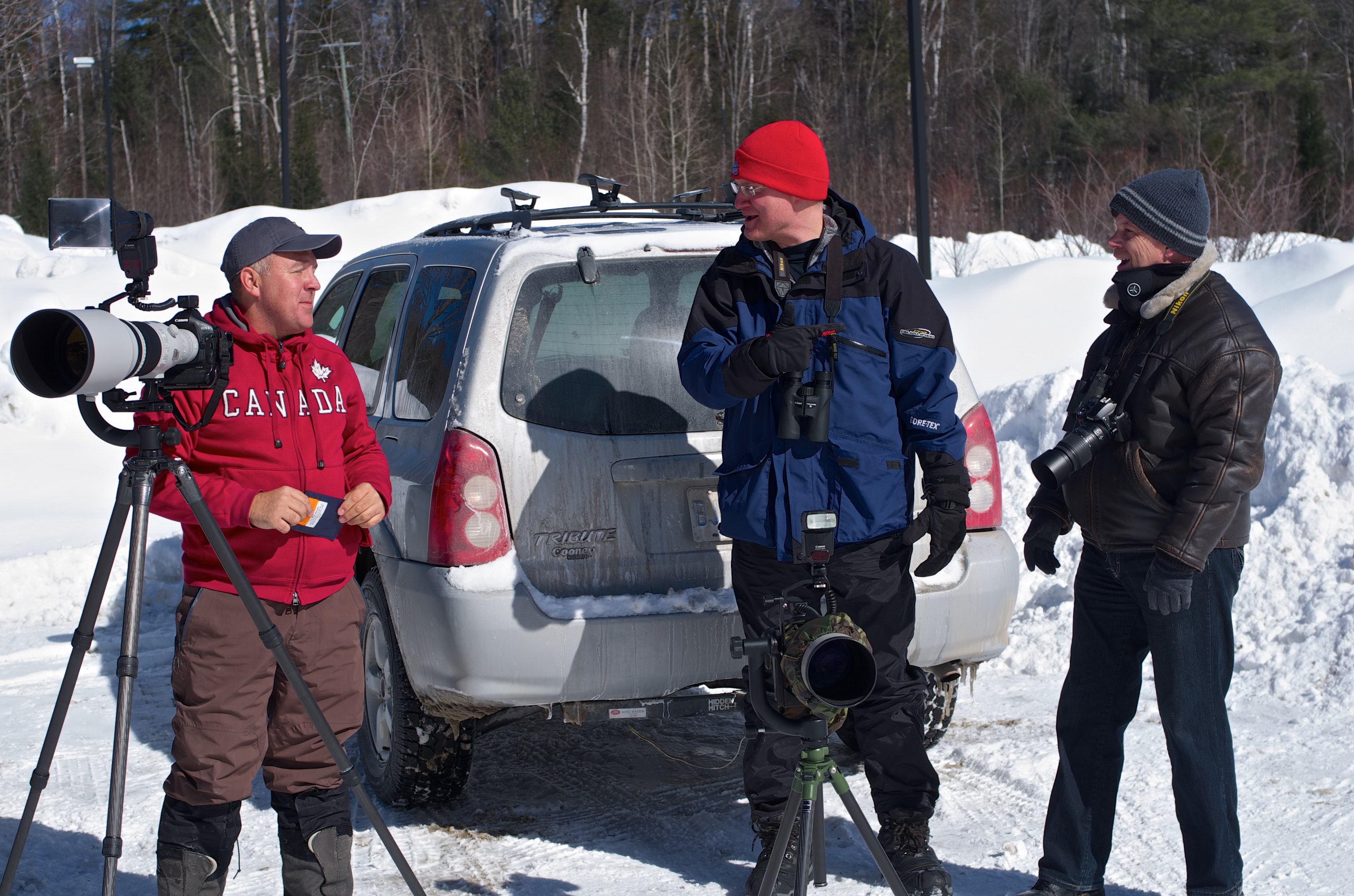When I moved to my current location 15 years ago, the 7000 sq.km park ynear me paid $250 an image if they wanted one of your images. As digital developed the price fell to $20. Now, there are so many with such great and capable gear, they will give you credit in their publications but they won’t pay for them. And they still get way more submissions than they want. I did make money for a while doing craft shows, but then I have an independent income, and it became not worth my time, even though I was selling well. Up to $2000 in a weekend. however if you look at the time, captureing the images, printing and framing etc. I don’t think the hourly rate came to much.
So many people these days , retire to do wildlife photgraphy.
 2022-02-19-Photographers-1
2022-02-19-Photographers-1 by
Norm Head, on Flickr
 2018-01-29-park-Photgrphers-
2018-01-29-park-Photgrphers- by
Norm Head, on Flickr
 2014-03-02-Phtographers
2014-03-02-Phtographers by
Norm Head, on Flickr
 2024-12-30-AP-OCostello-Creek-1
2024-12-30-AP-OCostello-Creek-1 by
Norm Head, on Flickr
The only possible advice I’d throw out there, would be spend as much time as possible near wildlife, especially in areas where they are somewhat habituated to human activity, learn to anticpate animal and bird movement. FInd a few good spots to shoot near where you live and spend as much time there as possible. Basicly work your tail off. You have a lot of competition.
Here’s my wildlife page
Explore this photo album by normhead on Flickr!

www.flickr.com
However I’d point out, I mostly sold sunsets and landscapes. ( A fellow photographer in the next booth to me once said "They look at your artsy shots to make sure you're a real photographer, then they buy a sunset.") If you’re going to make a living at it, you have to be way better than this. Dynamic images. Images in better light (morning and sunset light.) The one exception being one of my buddies shooting a Algonquin Red Wolf.
 2013-06-03-AP-Red-Wolf-3
2013-06-03-AP-Red-Wolf-3 by
Norm Head, on Flickr
My image of the same wolf, I was almost right beside him, and looks identical for practical purposes. Here’s my image. Jerry makes money from his, my wife gave one of ours to the park.
 2013-06-03-AP-Red-Wolf-4
2013-06-03-AP-Red-Wolf-4 by
Norm Head, on Flickr
Jerry owns a series of outfitting stores(so he has place to show his work) and his image is pretty much indestinguishable from mine, and he’s sold the image at least 30 times. SO if you do get some worthwhile images I’d get in touch with a local co-op gallery, that will display your work and not take too much commission. The one near me only charges 20% commission. (It’s run as. a non-profit.)
Unless you have raptor hunting, bird images generally don’t sell. Images of mammals do. But they have to be stellar.
One of my favourite images...
 2020-top-10-Camron-Rd-Pine-Martin
2020-top-10-Camron-Rd-Pine-Martin by
Norm Head, on Flickr
Every photographer that goes to the park with even the cheapest of equipment has a shot like this. I’ve met some who have travelled from as far away as Florida to photgraph one of these guys.
I hope that helps. I know it might seem kind of discouraging. But, the challenge is, you really have to excel at tracking and animal behaviours, and have more energy than a vole. Great wildlife shots are luck.But you increase you odds by being out there, the total amount of well spent time counts. ANd when a great situation presents it self, you better be ready. My wolf shot, in my 76 years and probaby more than a year spent in the bush, I’ve had exactly one opportuinty to take that shot, once and never again. If I’d missed it, that would have been my one chance. No pressure, but you have to be really good, you have to have an eye for composition, and I find, my best images come when I’m alone. Too many photograpehrs can spook wildlife.
Good luck. Work your ass off.
 2022-02-19-Photographers-1 by Norm Head, on Flickr
2022-02-19-Photographers-1 by Norm Head, on Flickr 2018-01-29-park-Photgrphers- by Norm Head, on Flickr
2018-01-29-park-Photgrphers- by Norm Head, on Flickr 2014-03-02-Phtographers by Norm Head, on Flickr
2014-03-02-Phtographers by Norm Head, on Flickr 2024-12-30-AP-OCostello-Creek-1 by Norm Head, on Flickr
2024-12-30-AP-OCostello-Creek-1 by Norm Head, on Flickr
 2013-06-03-AP-Red-Wolf-3 by Norm Head, on Flickr
2013-06-03-AP-Red-Wolf-3 by Norm Head, on Flickr 2013-06-03-AP-Red-Wolf-4 by Norm Head, on Flickr
2013-06-03-AP-Red-Wolf-4 by Norm Head, on Flickr 2020-top-10-Camron-Rd-Pine-Martin by Norm Head, on Flickr
2020-top-10-Camron-Rd-Pine-Martin by Norm Head, on Flickr